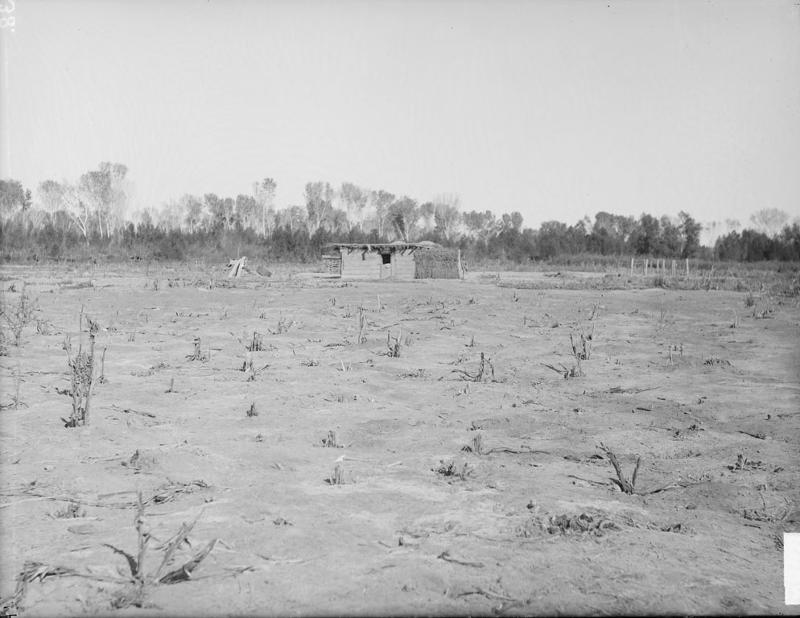Subsistence
The lower Colorado River flows through the extremely arid Mojave Desert. Summers in the region can reach temperatures over 200° and precipitation averages less than 3" per year. The Colorado River, however, does not rely on local precipitation but is fed by snowmelt drained from mountains within a watershed some ¼ million acres in size. The river was thus a dependable source of water and, until its waters were impounded by dams in the early 20th century, regularly overflowed its banks every spring. Floods from these slow-moving waters would deposit rich silts over floodplains for distances as far as 1-2 miles from the river bank. When the water receded in June, the Yumans would plant their crops in the fertile, moist soils. Because the soils were renewed every year, crops did not need to be rotated and no fertilizing of the fields was required. For the River Yumans, farming was easy and productive. Cultivated foods comprised about half of their diet, with the other half coming from wild plants collected from the floodplain and fish taken with nets or weirs from the river.
Yuman cornfield after harvesting, ca. 1900 A.D

Source - http://sirismm.si.edu/naa/baegn/gn_02842.jpg
Click on next page to continue.
